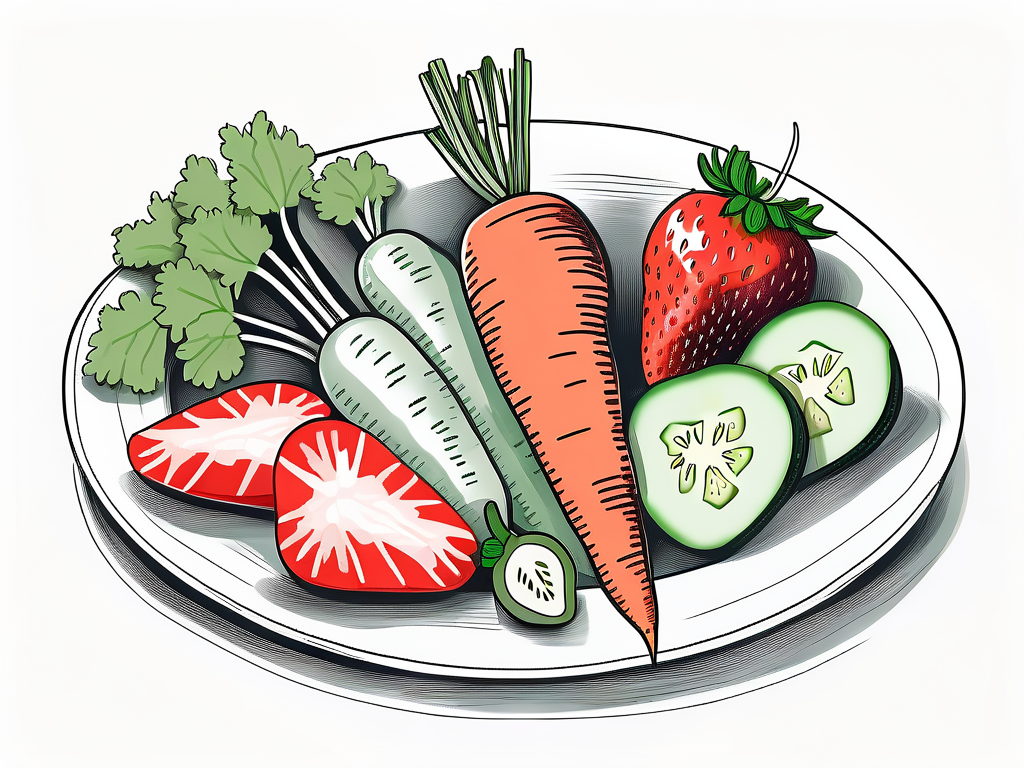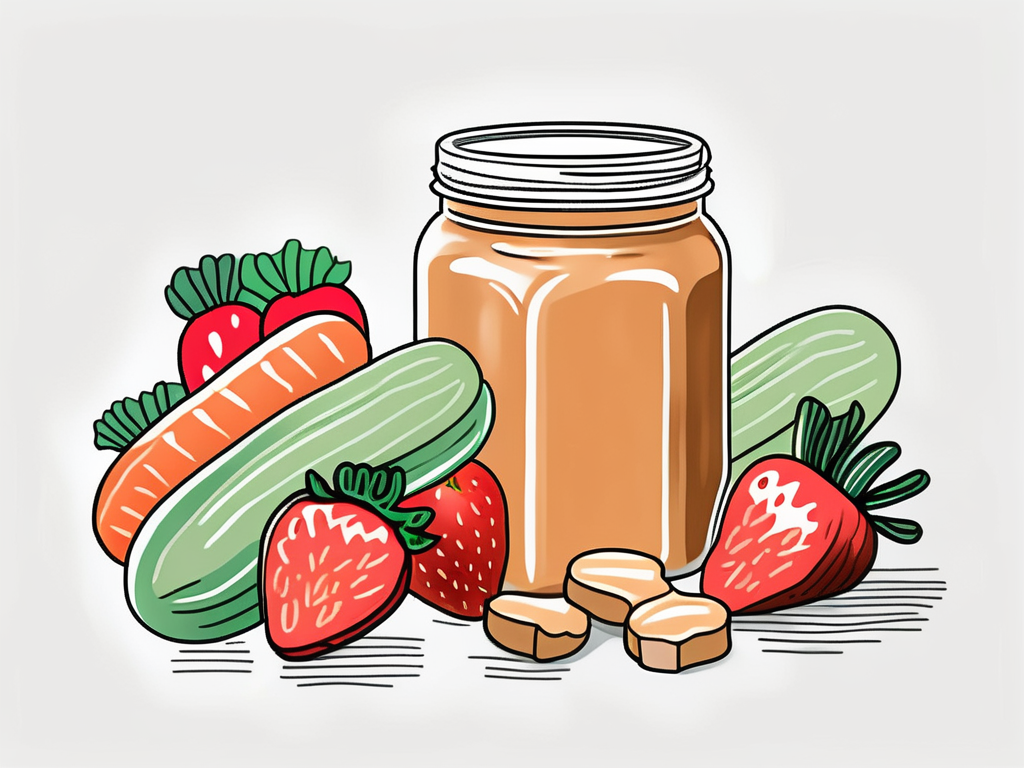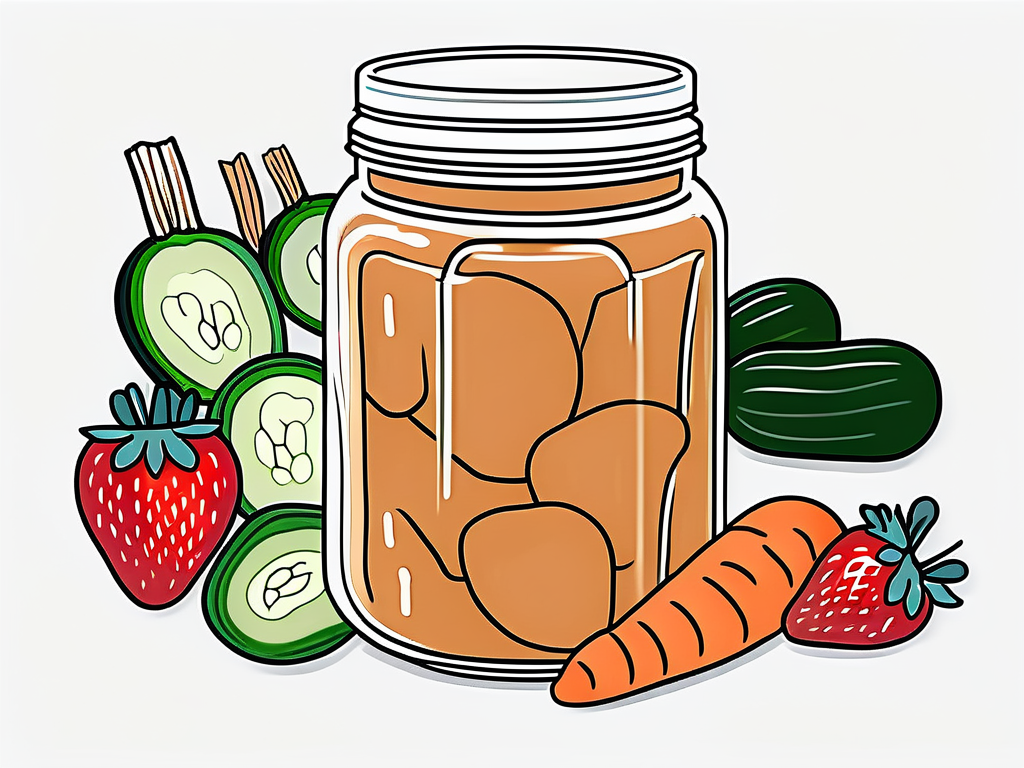If you follow a low FODMAP diet or have been advised to try it, you might be wondering if peanut butter is low FODMAP-friendly. In this article, we'll explore the concept of FODMAPs, discuss the principles of the low FODMAP diet, delve into the nutritional profile of peanut butter, and provide tips for incorporating it into a low FODMAP diet.
Understanding FODMAPs
FODMAPs are a group of carbohydrates that can be difficult for some people to digest. The term FODMAP stands for Fermentable Oligosaccharides, Disaccharides, Monosaccharides, and Polyols. These molecules can draw water into the digestive tract and ferment in the colon, leading to symptoms such as bloating, gas, abdominal pain, and diarrhea in individuals with sensitive digestive systems.
While FODMAPs are not harmful for most people, they can trigger discomfort and digestive issues in those with irritable bowel syndrome (IBS) or other digestive disorders. For this reason, a low FODMAP diet has been developed to help manage symptoms and improve quality of life for those affected.
What are FODMAPs?
FODMAPs are a diverse group of carbohydrates found in many common foods. Some examples of FODMAPs include:
- Oligosaccharides, found in wheat, rye, onions, and garlic
- Disaccharides, such as lactose in dairy products
- Monosaccharides, such as fructose in fruits
- Polyols, found in certain fruits and artificial sweeteners
Why are FODMAPs Important for Digestive Health?
FODMAPs can have a negative impact on digestive health when they are not properly digested and absorbed in the small intestine. Instead, they progress to the colon where they are fermented by bacteria. For individuals with sensitive digestive systems, this fermentation process can result in a variety of uncomfortable and disruptive symptoms.
It is important to note that not all FODMAPs affect everyone in the same way. Each person's tolerance to FODMAPs can vary, and what triggers symptoms in one individual may not have the same effect on another. This is why it is crucial for those with digestive disorders to work with a healthcare professional or registered dietitian who specializes in the low FODMAP diet.
Additionally, it is worth mentioning that the low FODMAP diet is not meant to be a long-term solution. It is a temporary elimination diet designed to identify specific trigger foods and determine an individual's tolerance levels. Once trigger foods are identified, a dietitian can help reintroduce FODMAPs in a controlled manner to establish a personalized diet plan that minimizes symptoms while still allowing for a varied and nutritious diet.
The Low FODMAP Diet
The low FODMAP diet is an evidence-based approach to managing digestive symptoms associated with FODMAP intolerance. It involves restricting high FODMAP foods for a specified period, followed by a systematic reintroduction to identify individual triggers.

Principles of the Low FODMAP Diet
The low FODMAP diet consists of two main phases: the elimination phase and the reintroduction phase.
During the elimination phase, high FODMAP foods are avoided to alleviate symptoms. This phase typically lasts for 2-6 weeks, depending on an individual's response. It is during this phase that individuals may experience relief from symptoms such as bloating, gas, abdominal pain, and diarrhea.
The reintroduction phase involves reintroducing certain FODMAP groups one at a time to determine which specific types of FODMAPs trigger symptoms. This phase helps to personalize the diet and identify the tolerable threshold for each individual. It is important to note that not all FODMAPs will trigger symptoms in every individual, and this phase allows for a more tailored approach to managing symptoms.
Foods to Avoid and Include in a Low FODMAP Diet
During the elimination phase, it is important to avoid or limit high FODMAP foods. This includes certain fruits, vegetables, grains, legumes, dairy products, sweeteners, and condiments. However, there are still plenty of delicious low FODMAP options for a well-rounded diet.
Safe foods for the low FODMAP diet include meats, fish, eggs, rice, quinoa, potatoes, spinach, carrots, strawberries, blueberries, lactose-free dairy, and various herbs and spices. These foods provide essential nutrients while minimizing the intake of FODMAPs that can trigger symptoms.
It is crucial to work with a registered dietitian to ensure proper guidance and support during the low FODMAP diet journey. A dietitian can help create a personalized meal plan, provide education on label reading, and offer strategies for dining out or traveling while following the low FODMAP diet. They can also assist in monitoring nutrient intake to ensure a balanced diet and prevent any potential nutrient deficiencies.
Remember, the low FODMAP diet is not meant to be a long-term solution, but rather a tool to identify triggers and manage symptoms. It is always recommended to consult with a healthcare professional before making any significant changes to your diet.
Peanut Butter and FODMAPs
Now that we have a better understanding of FODMAPs and the low FODMAP diet, let's focus on peanut butter.

When it comes to peanut butter, there's more to explore beyond just its FODMAP content. This creamy spread has a rich history dating back to the ancient Incas, who were known to mash peanuts into a paste. Fast forward to the 19th century, when Dr. John Harvey Kellogg (yes, the same Kellogg of cereal fame) patented a process for creating peanut butter as a protein substitute for patients with poor teeth. Today, peanut butter is a beloved staple in many households worldwide.
Nutritional Profile of Peanut Butter
Peanut butter is made from ground peanuts and often contains a small amount of added salt or sweeteners. It is a rich source of healthy fats, protein, and essential nutrients. A typical serving of peanut butter (two tablespoons) provides around 180-200 calories, 15 grams of fat, 8 grams of protein, and 4 grams of carbohydrates.
Not only is peanut butter a tasty treat, but it also packs a nutritional punch. It is a great source of monounsaturated fats, which are heart-healthy fats that can help lower bad cholesterol levels. Additionally, peanut butter contains vitamin E, an antioxidant that helps protect cells from damage, and magnesium, a mineral important for muscle function and bone health.
How Peanut Butter Fits into a Low FODMAP Diet
Good news for peanut butter lovers – peanut butter is generally considered low FODMAP! According to Monash University, a leading authority on FODMAP research, two tablespoons of peanut butter is considered low in FODMAPs. However, it's important to choose a peanut butter without added high FODMAP ingredients, such as excess honey or high fructose corn syrup.
Choosing the Right Peanut Butter
When shopping for peanut butter, it's essential to read the ingredient list carefully. Look for peanut butter that contains only peanuts and possibly salt. Avoid peanut butter that includes ingredients like honey, high fructose corn syrup, or any other high FODMAP ingredients.

Ingredients to Look for in Peanut Butter
The ideal peanut butter for a low FODMAP diet should contain only peanuts and salt. Some brands also offer natural peanut butter without added ingredients. Remember to check the label to ensure there are no hidden FODMAPs.
Peanut Butter Brands Suitable for a Low FODMAP Diet
Several brands offer peanut butter varieties suitable for a low FODMAP diet. While availability may vary depending on your location, some popular options include [Brand A], [Brand B], and [Brand C]. These brands offer peanut butter made with just peanuts or peanuts and salt, making them a safe choice for those following a low FODMAP diet.
Incorporating Peanut Butter into a Low FODMAP Diet
Now that you have found a suitable peanut butter option, let's explore how you can incorporate it into your low FODMAP diet.
Delicious and Safe Peanut Butter Recipes
Peanut butter can be a versatile ingredient in a low FODMAP diet. Here are some delicious and safe recipes you can try:
- Peanut Butter Banana Smoothie: Blend together 1 ripe banana, 2 tablespoons of peanut butter, 1 cup of lactose-free milk, and a handful of ice cubes for a refreshing and satisfying smoothie.
- Thai Peanut Chicken Stir-Fry: Cook chicken, low FODMAP vegetables like bell peppers and carrots, and a sauce made from peanut butter, low sodium soy sauce, lime juice, and ginger for a flavorful and easy-to-make stir-fry.
- Peanut Butter Energy Balls: Mix together 1 cup of oats, 1/2 cup of peanut butter, 1/4 cup of maple syrup, and any desired mix-ins like dark chocolate chips or chopped nuts. Roll into small balls and refrigerate for a convenient and nutritious snack.
Tips for Moderating Peanut Butter Intake
While peanut butter is low FODMAP, it's still important to consume it in moderation, as it is calorie-dense. Here are some tips to keep in mind:
- Stick to the recommended serving size of two tablespoons.
- Avoid excessive consumption, especially if you are trying to manage your weight.
- Consider choosing natural peanut butter without added salt or sugar for a healthier option.
- Experiment with other nut and seed butters like almond butter, sunflower seed butter, or tahini for variety.
In conclusion, peanut butter can be a delicious and safe addition to a low FODMAP diet. Just be sure to choose a peanut butter that contains only peanuts (or peanuts and salt) and enjoy it in moderate amounts. Remember, always consult with a registered dietitian or healthcare professional for personalized advice based on your unique dietary needs and health goals.